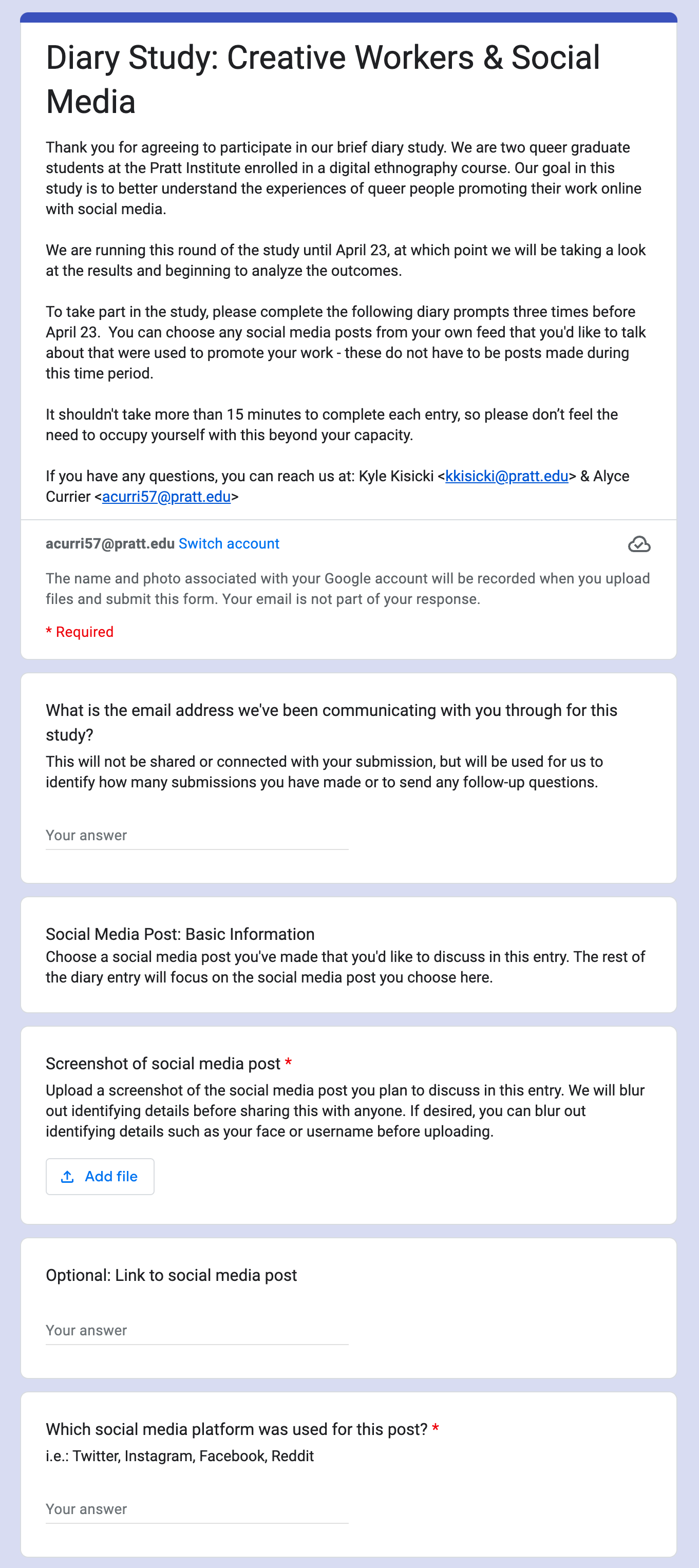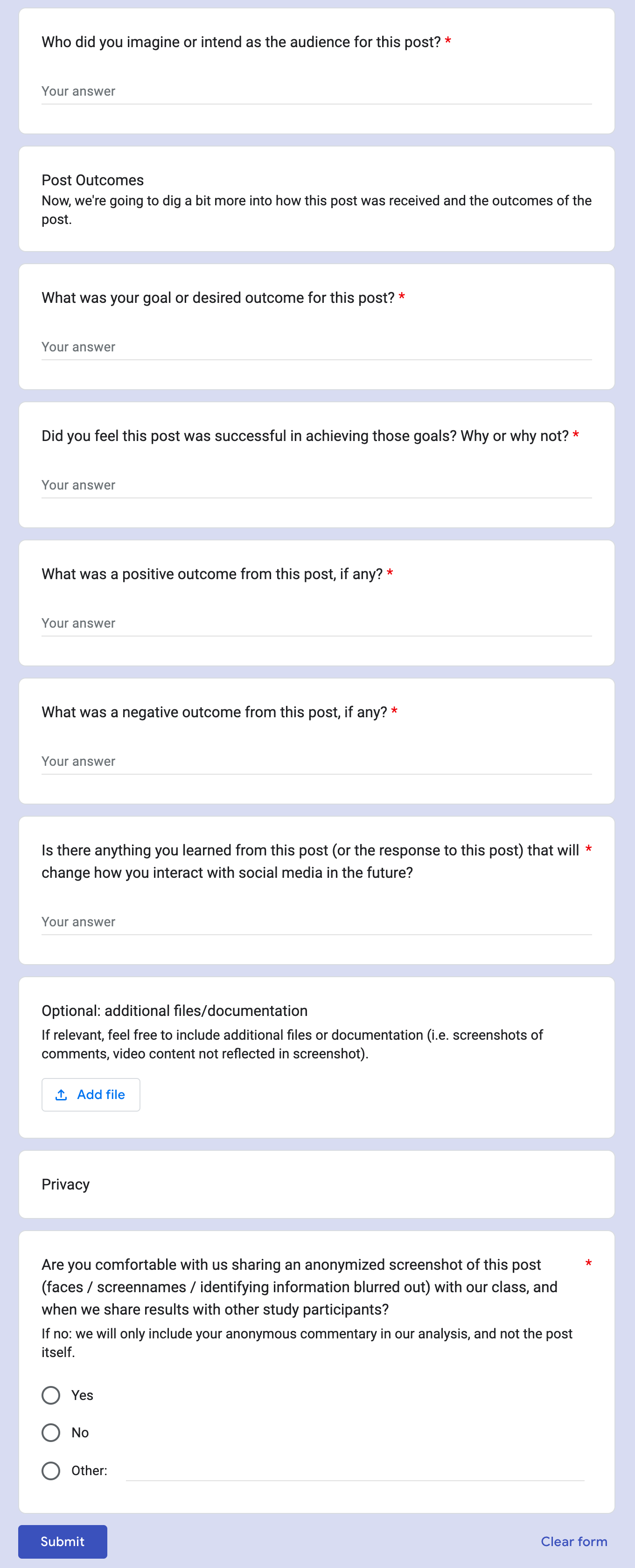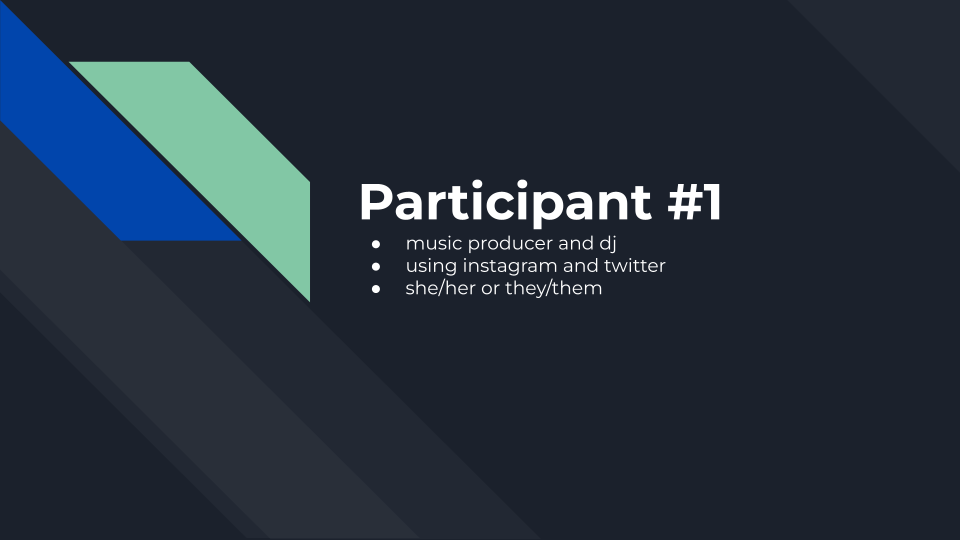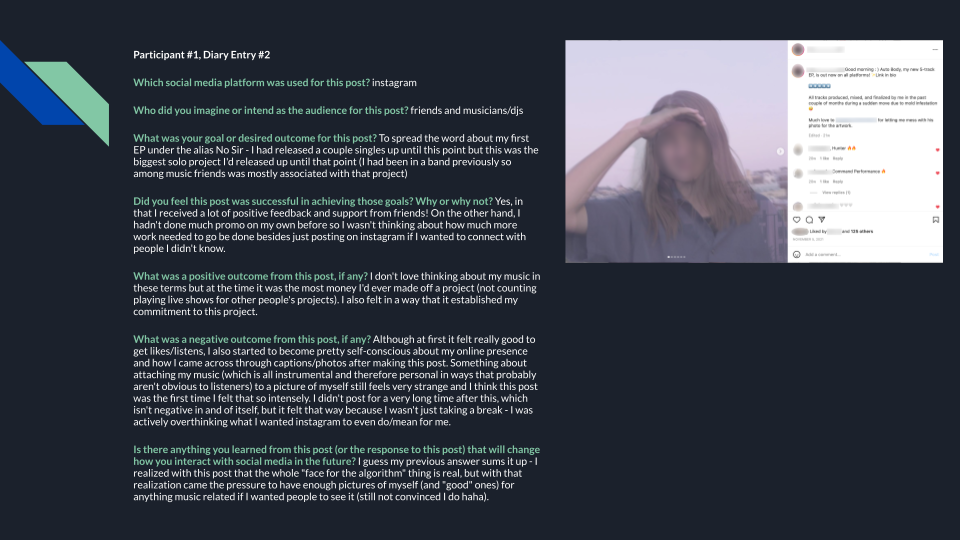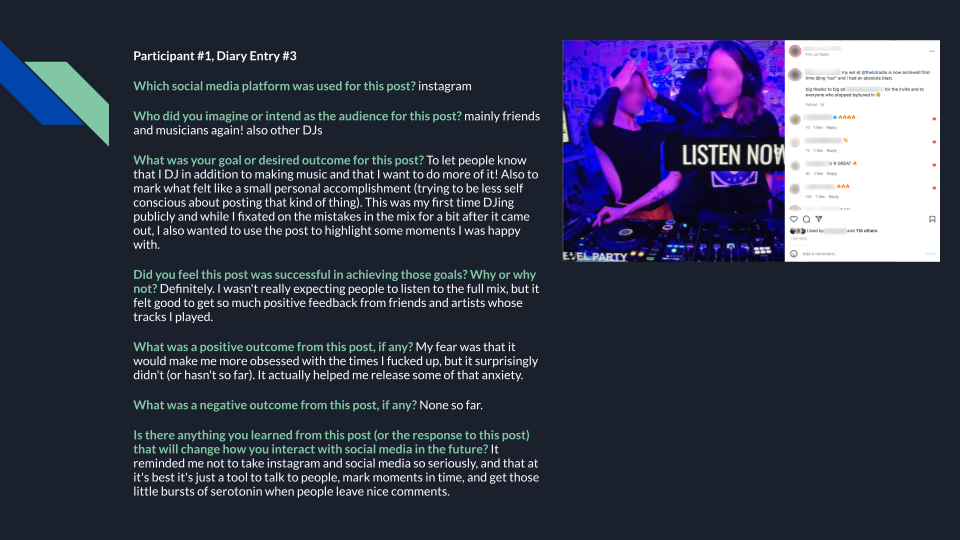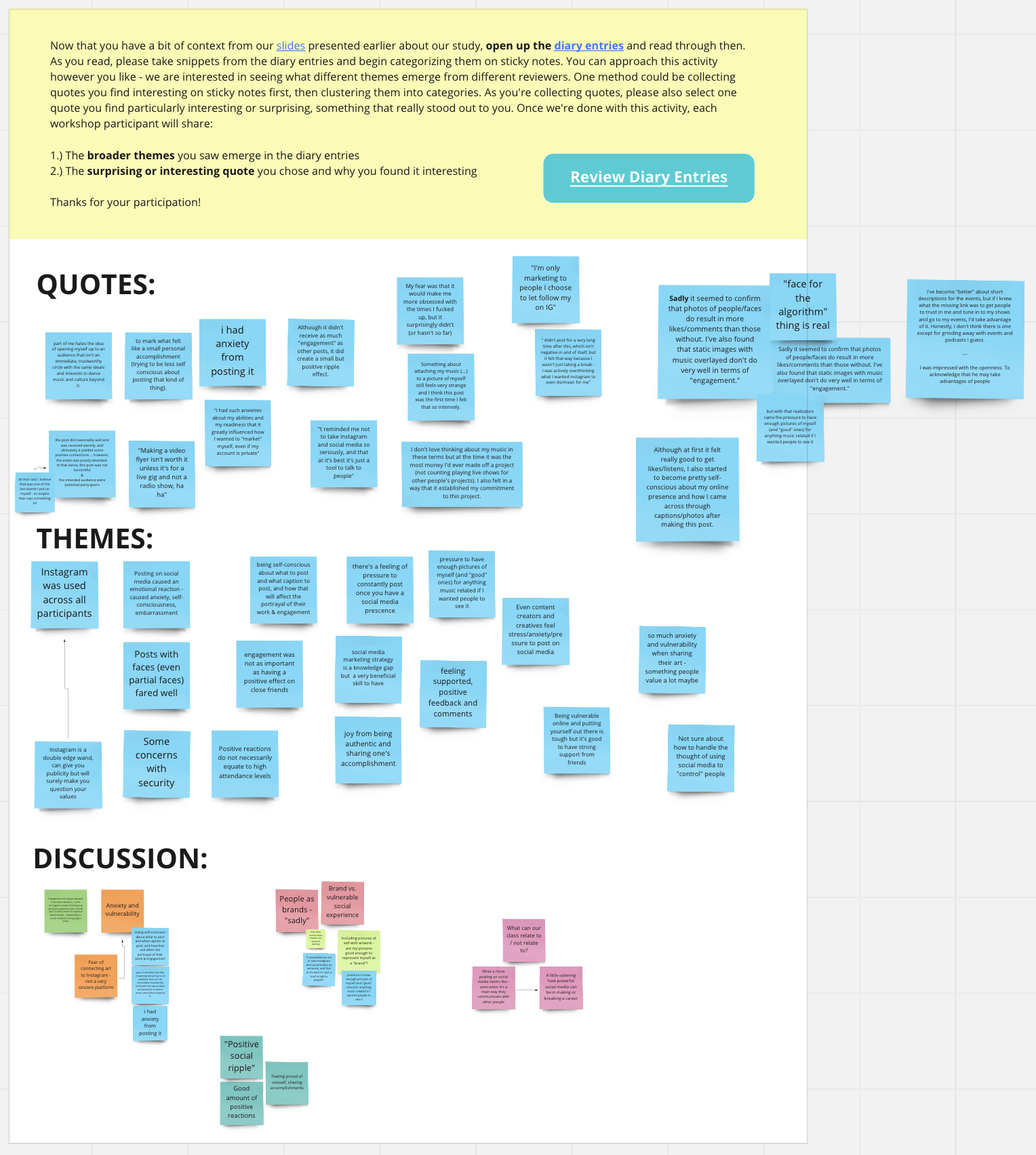For some of us, social media is merely a distraction or a place to stay in touch with friends. For today’s musicians and many other independent workers, it’s a necessity to stay relevant and find work.
Classmate Kyle Kisicki and I conducted a qualitative ethnographic research study, including a diary study, in-depth interviews, and digital observation, for INFO 649: Practical Ethnography for UX at Pratt Institute to examine how musicians use social media to promote their creative work and what challenges they face.
We summarized the study results in both a field guide booklet and presentation slides.
Download PDF Field Guide Download PDF Presentation
Team / client
Pratt Institute - INFO-649
Practical Ethnography for UX
My role
- Ethnographic research
- Generative interviews
- Diary study design and analysis
- Booklet design
- Presentation design
Timeline
March - May 2022
6 weeks
Tools Used
- Figma
- Miro
- Google Forms
- Filmora
Digital EthnographyUX ResearchDiary Study

